Anna Huntington Stanley
Anna Huntington Stanley (April 20, 1864 – February 25, 1907) was an American Impressionist artist. She was born on April 20, 1864 in Yellow Springs, Ohio to Anna Maria Wright and General David Sloan Stanley, US Army. She died in 1907.[1]
Anna Huntington Stanley | |
|---|---|
.jpg) | |
| Born | April 20, 1864 Yellow Springs, Ohio, United States |
| Died | February 25, 1907 (aged 42) |
| Movement | American Impressionism |
Her works are found in numerous institutional collections including The Smithsonian American Art Museum.[2] An exhibition that included her work, Dutch Utopia: American Artists in Holland, 1880–1914 [3] was featured at the Telfair Museum of Art,[4] the Taft Museum of Art, Grand Rapids Art Museum,[5] and the Singer Museum.
Biography
Early life
Anna Stanley was born in a small village in Greene County, Ohio. She arrived during the fourth year of the American Civil War; that same year Abraham Lincoln was completing his first term as president, General William Tecumseh Sherman launched his campaign, March to the Sea, and Anna's father, U.S. Army Brigadier-general David Sloan Stanley was wounded at the Battle of Franklin. Anna was cared for by her mother, Anna Maria, among six other siblings. Her father's military career moved the Stanley family several times in the years following the Civil War, taking them to South Dakota, Michigan, New York, Texas and Washington, DC. In spite of this transient life, the commitment of David and Anna Maria Stanley to foster an environment that valued God, education, distinctive accomplishment and culture, the family remained intimate and resilient. It was this environment that nurtured Anna's ability to interpret the world around her through her art.
Anna Stanley spent her high school years in New York where she attended the Buffalo Female Academy and was lauded for her skills in drawing and painting. Anna received instruction under Ammi Merchant Farnham (American, 1845-1922), who studied at the Royal Academy of Bavaria and the Munich Academy under Frank Duveneck. An accomplished artist and curator of the Buffalo Academy of Fine Arts (renamed in 1962, the Albright-Knox Art Gallery), Farnham's oeuvre includes atmospheric landscapes, often painted in late afternoon, depicting luminous twilight scenes, which lend much influence to many of Anna's later paintings. Her achievements were recognized when one of her pen and ink drawings was selected for the cover illustration on The Magnet, which was published by the ladies of the Academy.
In the fall of 1882 Anna moved to Philadelphia to continue her education at The Pennsylvania Academy of the Fine Arts and improve her mastery of the human figure. She attended anatomy lectures and studied life drawing and sculpture under Thomas Eakins (American, 1844-1916) and Thomas Anshutz (American, 1851-1912) until the spring 1885. During this time, she also met Chicago artist Pauline Dohn Rudolph ("Lena"), a former students of the School of Art Institute of Chicago, who would later accompany Anna to Europe.
European years

A privileged young woman, in 1887 Anna accompanied by her mother and friend, Lena, traveled to Venice and then on to Paris, where she enrolled in the Académie Julian. Renting a space on the top floor of the Hotel Oxford and Cambridge, Anna's accommodation was connected to an adjoining room occupied by Lena. They were situated in the 1st arrondissement of Paris in close proximity to the Tuileries Garden and the Musée du Louvre. Surviving family correspondence, including illustrations, describes the experiences they had while they were there. These letters include descriptions of artists’ materials, subject matter in included in works of art, and comments about critiques received from their instructors.

Under the training of Gustave Clarence Rodolphe Boulanger and Jules-Joseph Lefebvre, Anna produced figurative charcoal drawings rather than paintings; both were revered artists. Lefebvre was known for his meticulously executed portraits and nudes, and during his long career, he earned three Salon medals, was appointed to the French Academy of Fine Arts, attained the rank of Commander in the Legion of Honor, and won the coveted Prix de Rome in 1861. Gustave Boulanger, also a figure painter, was best known for his classical and Orientalist subjects. Some of his other students included Childe Hassam, George Hitchcock, Frederick William MacMonnies, Gari Melchers, Willard Leroy Metcalf, Elizabeth Nourse, Robert Reid, and Edmund Charles Tarbell - Anna's work was in good company. Likely her awareness of the reputations of her mentors resulted in welcomed reception of their instruction. In one letter, she wrote that she received "stern criticisms" and yet recounted that they were “fair and instructive.”
Several other artist and friends from the Pennsylvania Academy of the Fine Arts also studied at the Académie Julian. One such student was Ida C. Haskell, whose mother came to Paris to look after the young women. While there, Mrs. Hanna Haskell wrote to John H. Vanderpoel, an art teacher at the School of the Art Institute of Chicago, to inquire about where she and the students might summer in 1888. (It was not uncommon for artist students to paint en plein aire during summers, to take advantage of the out-of-doors after a cold damp Paris winter.) Vanderpoel responded by suggesting they consider spending their summer in Rijsoord in the Netherlands, where his parents lived before they immigrated to America. He advised that the cost of living in Rijsoord would be affordable, the scenery excellent, and his cousins—a family named Noorlander, would be good companions. Having previously taught at the Académie Julian, Vanderpoel also decided to accompany the students to Rijsoord where he could paint and teach. Julian friends, Page Scott and Alice Kellogg from Chicago, and Page's sister Gertrude, joined the expedition.
Anna's experience in Holland would forever influence her work as an artist. Rijsoord was so isolated from the outside world that strangers were cause for great attention. In a letter to her parents, Anna wrote of a large crowd of more than 100 local children that followed Anna and Mrs. Haskell, almost causing a riot because they had never seen artists before. Her affection for these citizens ensued in picturesque portrayals of Dutch farmers and laborers, predominantly women and children, and gorgeous views of river scenes, dikes, and wide-open landscapes.
In the fall of 1888, Anna returned to Paris along with her friends. Rather than returning to the Académie Julian, they registered at the Académie Colarossi where the fees were more reasonable, and the classes were less structured and more progressive. There they received instruction from artists Jean-André Rixens (1846-1925) and Gustave-Claude-Etienne Courtois (1852-1923). Anna moved to an apartment house with Page Scott, Ida C. Haskell, her mother Hannah, Alice Kellogg, Amy Atkinson from York, England, the Jordain sisters [first names unknown] and Adele. Anna, along with her friends, also rented artists’ studios. Anna shared hers with another Colarossi student, Beulah Strong. In a letter from Alice Kellogg, she wrote, “Nan has it one half day, Beulah the other [half] so practically they have the studio alone.”(It was also noted by Alice that during this fall and winter period evening painting classes were taken with nude subjects.)
The Noorlander family established a pension fund for the artists and travelers. “According to the plaque on the facade [of their house], the first corner stone was laid by a certain A. H. Stanley, presumably one of the American artists.” In May 1889, Anna's painting, Au commencement et à al fin, was selected for exhibit at the Paris Salon, and in June she, along with many of the student artists, returned to Rijsoord. (Both summers [1888 and 1889] in Risjoord lasted from May or June to November, and Anna produced substantial works as reflected in later American exhibitions.
Later American years and travel to Asia
In November 1889, Anna sailed from Rotterdam for New York, accompanied by Page Scott. A month later, she was in San Antonio, TX and, by 1890, she had executed a formal portrait of her father in uniform.[10] Nearly twenty-six years old, her career was well established; in April she exhibited two paintings at the National Academy of Design in New York. Now recognized as a professional artist, her works were exhibited in numerous nationally prominent exhibits over the next few years, which were accompanied by price increases.
By June 1891 Anna had three paintings included in the First Annual Exhibition of American Art at the Detroit Museum of Fine Arts in Michigan (along with her former teacher John H. Vanderpoel). Her work was exhibited annually in the Northern and Eastern parts of the U.S., with exception of 1893, when the only thing known of her activities comes from a photograph taken in the summer at an artist colony of Napanoch, New York. [She can be seen carrying the incomplete painting of Girl Reading.] It was this same year that she painted her brother David's full-length portrait, Cadet, while he was on a short vacation from West Point.
Anna continued to produce works over the next several years and exhibited at the National Academy of Design, The Boston Art Club, and with the Society of Washington Artists. Her work was also included in an important exhibition in Washington, D.C., for the Grand Army of the Republic, a veterans’ group that formed after the Civil War.
In 1895, Anna's mother died in April and her brother, David, graduated from West Point Military Academy in June. It was here that she met Lieutenant Willard Ames Holbrook, the former Aide-de-Camp to General Stanley at Fort Sam Houston (1891 to 1892), and they began corresponding. Within days of her brother's graduation, Anna and Ida C. Haskell, boarded a ship in New York and sailed for Rotterdam. Anna remained in Rijsoord for five months, and there she produced The Sand Sifter, Harvest [10], The Windmill and Girl Carrying Sheaves. This would be her last trip to the Netherlands. When Anna returned to New York that November, Willard, (as noted in his memoir) missed meeting her ship.
In April 1896, Anna's work was exhibited three times, and Veerhoff Galleries in Washington, D.C., presented five of her paintings in a solo show. In October 1896 Anna and Willard Holbrook were married in Washington with a large reception at Quarters Number 1, General Stanley's residence at the Old Soldiers’ Home. In December, Anna moved with Willard to his post at Fort Grant, Arizona.
In 1897, Anna exhibited The Spinning Wheel at the Society of Washington Artists, Cosmos Club, Washington, D.C.; this is the last known exhibition of Anna's work during her lifetime, although she continued to paint.
May 1899, Willard Ames Holbrook, Jr. was born and two weeks later, Willard Sr. was sent to Georgia and then assigned to the war in Cuba. April 1900, David Stanley Holbrook (known as Stanley) was born at Angel Island, San Francisco. That same year Willard was sent to the Philippines and they were separated for over a year. During these two separations Anna lived in Washington with her father and sisters. During this time, her painting slowed but did not cease entirely and Spring House was painted during this period at Blackwell Farm in Warrenton, Virginia.
In 1901, Willard became a civil governor of Panay, an island in the Philippines, and Anna and the boys joined him. This position provided for a fully staffed house, and with the help of an American nanny, Anna was able to return to her painting. During this time, she completed many paintings, which are now included in family collections; other works are only known from black and white photographs from the governor's house. During their stay in the Philippines, Willard took Anna to Korea and Japan and she created the watercolors Pagoda and Buddha Nikko, Japan.
The family returned to America and lived at Fort Huachuca in Arizona, and then at Fort Prescott from 1903 to 1905, when Willard received orders to teach at the Pennsylvania Military College, Chester, Pennsylvania.
Anna died of pneumonia, Monday, February 25, 1907, at home in Chester and was buried at the United States Soldiers' and Airmen's Home National Cemetery in Washington, D.C. She was 42 years of age and left behind her husband and two young sons.
Chronology
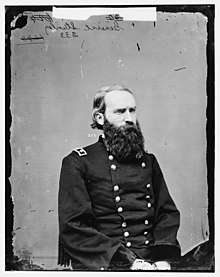
- 1864, April 18, Anna Huntington Stanley (later Holbrook) was born in Yellow Springs, OH; she was the fourth child of General David Sloan Stanley (1828 – 1902) of Chester Cedar Valley, OH, and Anna Maria Wright (d. 1895) of Wilkes-Barre, PA.
- 1874, The family moved to Detroit for General Stanley's military duties at Fort Wayne, MI.
- 1876, General Stanley was posted in New York, NY.
- 1881, Willard Ames Holbrook of Wisconsin (later General Stanley's aide-de-camp and Anna's husband), won appointment to United States Military Academy (USMA) at West Point, NY.
- 1878–82, Anna attended The Buffalo Female Academy, studying painting under Ammi M. Farnham and graduated from high school.
- 1882–85, Attended The Pennsylvania Academy of the Fine Arts in Philadelphia, studied under Thomas Eakins and Thomas Anshutz. Met students: Pauline “Lena” Dohn (later Rudolph), Anna “Page” Scott, Ida C. Haskell and Susan J. Moody, all of whom remained lifelong friends.
- 1884, General Stanley was ordered to Fort Sam Houston in San Antonio, TX, as commanding general of the Texas Territory, the family accompanied.
- 1885, General Stanley addressed West Point graduates, one of whom, Willard Ames Holbrook, who graduated 17th in his class.
- 1887–88, Anna attended Académie Julian, Paris, FR and studied under Boulanger and Lefebvre. She lived with Lena Dohn at the Hotel Oxford and Cambridge at 13 rue d’Alger near the Tuileries Garden and the Musée du Louvre.
- 1888,
- May 1, exhibited charcoal drawing Portrait de Mme. E. H…: --fusain, Paris Salon. (Location unknown.)
- May – November, painted in Rijsoord, NL, with John H. Vanderpoel, formerly an instructor of the Art Institute of Chicago, along with Ida C. Haskell, Alice Kellogg, Page Scott and Lena Dohn.
In November began studying at the Académie Colarossi under Rixen and Courtois. Lived with Alice Kellogg, Ida C. Haskell, Anna Page Scott and Mrs. Hannah Haskell at 16 rue le Verrier near the Luxembourg Gardens. Anna shared a rented a studio with Beulah Strong (through 1889).
- 1889,
- May 1, exhibited Au commencement et à la fin (also known as At each end of the Thread), Paris Salon, Paris, FR.
- June – November, Anna painted in Rijsoord, NL.
- November 14, Anna Stanley and Page Scott arrived in New York from Rotterdam; Anna was resettled in Fort Sam Houston by November 30.
- 1890, Anna painted her father's portrait, possibly in Texas.
- April 10 – May 17, exhibited At each end of the Thread (also known as Au commencement et à la fin), and Girl Stirring Fire (also known asDutch Girl Stirring a Fire), National Academy of Design, Annual Exhibition, New York, NY.
- 1891,
- June 8 – 27, exhibited, Dutch Girl Stirring a Fire (also known as Girl Stirring Fire), Bringing Home the Milk (also known as The Milk Maid), Little French Sisters (also known as Two Children In Cart and The French Sisters), Detroit Museum of Art (now the Detroit Institute of the Arts), “First Annual Exhibit of American Art,” Detroit, MI.
- July 5, exhibited Brevet-Maj-General David Stanley, O’Brien Galleries Chicago, IL.
- August – June 1892, 1st Lieutenant Willard Ames Holbrook was Aide-de-camp to General Stanley in Texas.
- 1892
- In June General Stanley retired at Fort Sam Houston, TX and Lieutenant Holbrook was posted to West Point.
- November 21 – December 17, exhibited Busy Bee at the National Academy of Design, Autumn Exhibition, New York, NY (currently missing).
- 1893, September 13, General Stanley begins his appointment as Governor of the Old Soldiers’ Home, Washington, D.C., through April 15, 1898.
- 1894,
- January 20 – Feb. 17, exhibited Study of Girl (also called Girl Reading), Boston Art Club, Boston, MA.
- April 2 – May 12, exhibited Study of Girl (also called Girl Reading), National Academy of Design Annual Exhibition, New York, NY, which competed for the Norman W. Dodge Prize.
- April 9 – 14, exhibited Portrait of a West Point Cadet (also called Cadet [portrait of David Sheridan Stanley]), Society of Washington Artists at the Cosmos Club, Washington, DC.
- December 10 – 15, exhibited The Milk Maid (also known as Bringing Home the Milk), Two Children In Cart (also called The French Sisters), Girl Reading (also called Study Of A Girl), Grand Art Loan Exhibition, Washington, DC.
- 1895
- April 23, Anna's mother, Anna Maria Wright Stanley died in Washington, D.C., and was buried at the Soldiers’ Home National Cemetery.
- June, attended graduation of Anna's brother, David, from West Point and met instructor (and future husband) Lieutenant Willard A. Holbrook. He and Anna took a boating ride around Constitution Island with his sister as chaperone.
- June 22, Anna returned to Netherlands, via New York, with Ida C. Haskell on the Holland America Line steamship, SS Spaarndam.
- November, Anna returned to the United States; Willard Holbrook missed meeting her ship.
- December 23 – January 11, exhibited Harvest – Holland (also called Girl Carrying Sheaves) at the National Academy of Design, Autumn Exhibition, New York, NY.
- 1896
- March 2 – 7, exhibited Heather-covered Dunes – Holland (possibly Field of Bluebells or Blue Flowers in a Field, location unknown), A North Holland Peasant, Harvest – Holland (possibly Girl Carrying Sheaves), and The Hopeful Fisherman (also called The Lone Fisherman), Society of Washington Artists at the Cosmos Club, Washington, DC.
- April 26, exhibited Summer (also called Dutch Bride), Sand Sifter (also called Girl with a Winnowing Basket), The Road (also called Road by a Canal), The Windmill (also called Landscape with Windmills and Road by a Canal), and The Lone Fisherman (also called The Hopeful Fisherman), Veerhoff Galleries, Washington, DC.
- October 1, Anna and Lieutenant Willard Ames Holbrook, 7th Cavalry, married in the Chapel at the Old Soldiers’ Home Washington, DC.; the reception followed at General Stanley's residence (General Quarters No. 1).
- December 1, Anna moved with Willard to his post at Fort Grant, AZ.
- 1897
- April 5 – 10, exhibited The Spinning Wheel at the Society of Washington Artists, Cosmos Club, Washington, DC.
- 1898
- April 15, General Stanley retired from the Old Soldiers’ Home. He moved to a town house located at 2119 ‘O’ Street NW, Washington, D.C., with daughters Josephine and Blanche.
- May 31, Willard Ames Holbrook, Jr. was born Fort Grant, AZ.
- June 13, Captain Holbrook was ordered to Chickamauga, GA and then to Cuba. Anna visited friends and then went to Washington, D.C., with Willard Jr. Anna (there she wrote her will).
- 1899, The family moved to Fort Stevens, OR, where Willard expanded the Fort; the same year Willard was ordered to the Philippines.
- 1900
- April 20, David Stanley Holbrook born on Angel Island, San Francisco, CA. Anna's sister, Sarah Elizabeth “Lil” Stanley Rumbough, witnessed the Christening.
- Anna and her sons returned to Washington, D.C., to live with Anna's father, General Stanley, while Willard was in the Philippines (until 1901).
- 1901
- Ca. September 15, Anna sailed with her sons and their nanny (Barbara) to Manila, Philippines to meet her husband.
- September 25, the family sailed to San Jose de Buenavista, Panay, where Major Holbrook served as the Civilian Governor.
- 1902
- March 13, Anna's father, General David Sloan Stanley, died in Washington, D.C., and was buried at the Soldiers Home National Cemetery.
- Willard and Anna visited Korea and Japan; Anna painted watercolors in Nikko, JP.
- 1903
- February 6, Anna, Barbara and the boys returned to San Francisco on USS Sheridan troop transport.
- June 5 – July 17, Willard and his brother, Roy, traveled on troop transport to Nagasaki, JP and San Francisco, CA.
- The family moved to Fort Huachuca, AZ, and then to Fort Whipple, Prescott, AZ, where they lived until 1905.
- 1905, September, Major Holbrook was assigned to teach at the Pennsylvania Military College, Chester, PA.
- 1907, February 25, 1907, Anna Huntington Stanley died of pneumonia in Chester, PA at 42 years of age. She was buried at the Soldiers’ Home National Cemetery in Washington, DC.
Gallery
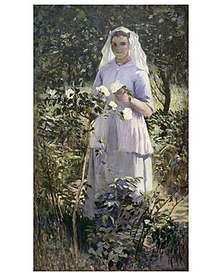 Summer, 1895
Summer, 1895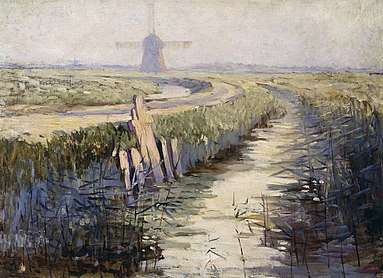 Road By A Canal, 1895
Road By A Canal, 1895%2Bcopy.jpg) The Milkmaid (Study), 1888-1889
The Milkmaid (Study), 1888-1889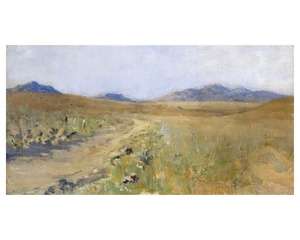 Arizona Landscape, 1896–98
Arizona Landscape, 1896–98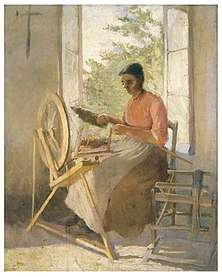 Girl Spinning, 1896–97
Girl Spinning, 1896–97
References
- "Biography". Anna Stanley. Archived from the original on 2013-07-26. Retrieved 2013-12-04.
- "SIRIS – Smithsonian Institution Research Information System". Siris-artinventories.si.edu. Retrieved 2013-12-04.
- Leeman, Fred (Spring 2011). "Exhibition review of Dutch Utopia: American Artists in Holland, 1880–1914". Nineteenth-Century Art Worldwide. 10 (1).
- "Dutch Utopia: American Artists in Holland, 1880–1914 | Telfair Museums". Telfair.org. Retrieved 2013-12-04.
- "Grand Rapids Art Museum presents Dutch Utopia : American Artists in Holland, 1880–1914" (PDF). Artmuseumgr.org. Retrieved 2013-12-04.